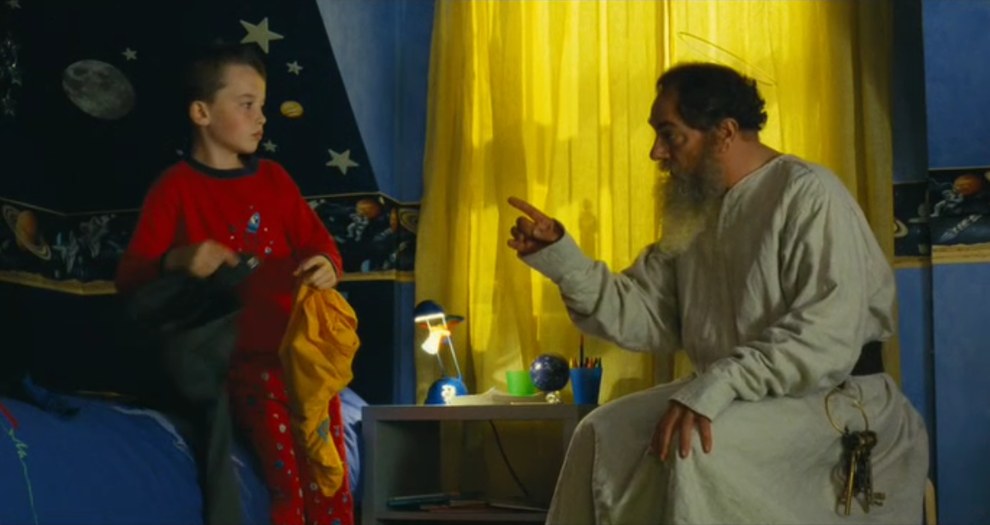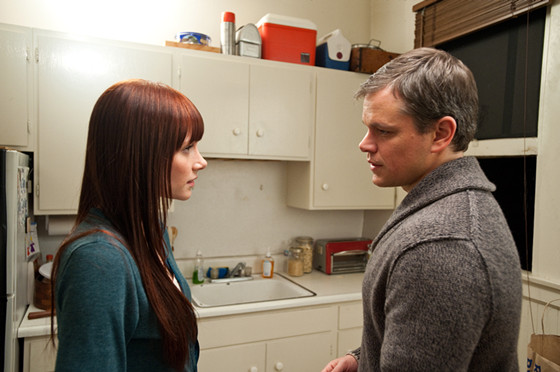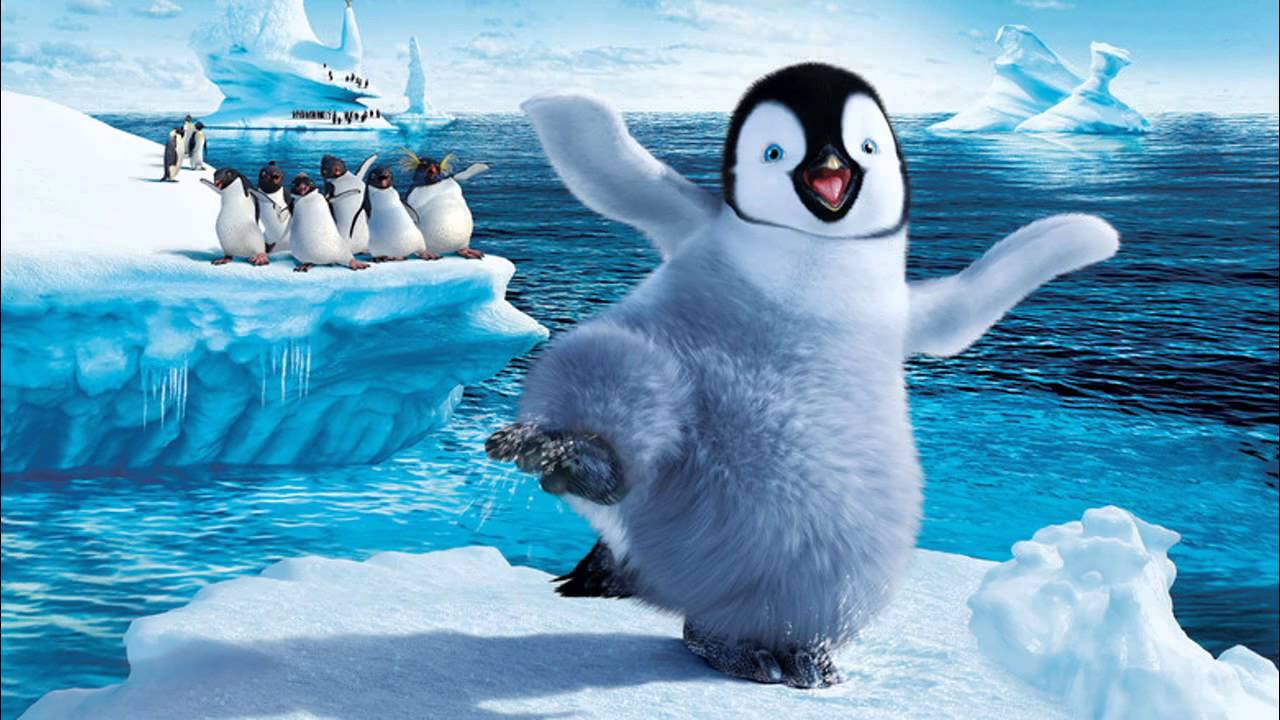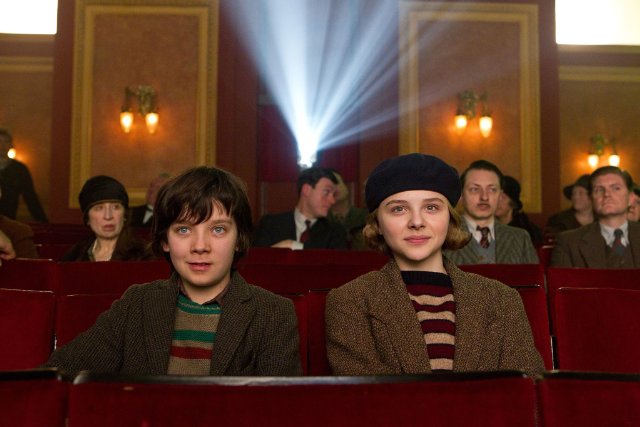5. Millions (Danny Boyle)

Danny Boyle broke the mold in 1996 when he released Trainspotting. A film that would go on to reenergize the British film scene and send Boyle into the stratosphere, Trainspotting was fast, fun, dark, and oddly comedic. Boyle was one of the freshest voices to arise at the end of the millennium, but it seemed as though it was more of a one-hit-wonder for the time being. Over the next decade he would make another black comedy (A Life Less Ordinary,) a failed big-budget blockbuster (The Beach) and then one of the most terrifying zombie movies of all time (28 Days Later…).
Like Scorsese, Boyle took a step away from crime and darkness and headed for much happier territory. In 2004 he released the only film intended for a younger audience that he’s ever made. Millions is very much an outlier in Boyle’s filmography. In this almost Dickensian tale, Boyle directs Frank Cottrell Boyce’s story of a seven-year-old who finds a bag full of Pounds just days before the transition to Euros.
It becomes a fable about ethics full of evil crooks, charming little boys, heartwarming endings, and enough praise to make one scratch their heads that the director had literally just come from making a movie with sprinting zombies that wreck havoc on society.
Maybe this was Boyle’s catharsis for making 28 Days Later… because he has never made a children’s movie since, but it certainly takes one by surprise when you see his name pop in the credits—especially if you’ve only seen his other work.
4. Hereafter (Clint Eastwood)

After a legendary ride in the upper echelons of the 20th century film business, winning several awards for his work on Unforgiven, giving us iconic characters and phrases, Clint Eastwood snuggled himself more and more into the director’s chair. Realistic and poignant, Eastwood made waves all throughout most of the 00s. Mystic River, Million Dollar Baby, Letters from Iwo Jima, and Gran Torino remain some of his finest work. But it was as he neared the end of the decade that something happened. After Invictus, which was in itself sort of strange—a very “American” director going after South African Rugby and Nelson Mandela—he came out with one of strangest movies of the new millennium.
As someone who had never quite dabbled in special effects, fantasy, or anything outside the gritty America he had personified in his earlier acting roles, Eastwood’s next feature, Hereafter is truly one of the biggest head-scratchers of any director’s filmographies.
Starring Matt Damon, this was almost like Eastwood trying to make something akin to M. Night Shyamalan as he follows a psychic who can connect with the afterlife. In it’s myriad of stories—Eastwood was really starting to lose touch with his focus here—there is no real conclusive ending to all of the fantasy. It struggles to bring out emotion for such an emotional subject—grief.
It is by far Eastwood’s most thought-provoking film, which is especially odd because he feels so classically trained. Yet in its good moments, it can only be felt that Eastwood is trying to be too sentimental when he really needed to focus on the raw emotions. Eastwood has since resorted back to more straightforward films, though his lack of focus is still fogs up much of his work.
3. Happy Feet (George Miller)

In the past couple years George Miller has become somewhat of a renowned name again after three decades. Mad Max: Fury Road reignited the love for the famed Australian director whose fated return to his cinematic universe came after thirty long years, but not many people realize exactly what he was up to between Beyond Thunderdome in 1985 and 2015.
After the comedic Witches of Eastwick starring Jack Nicholson and Cher, he went on to make Lorenzo’s Oil. Following that, one would assume the sky is the limit. A new Mad Max? No, that was in developmental hell since the 80s. A film about a pig in the city? Heck yeah! Babe: Pig in the City isn’t the oddity in his lineage. No, that one is none other than Happy Feet and it’s sequel.
Yes, the man who gave us the desolate wasteland of Mad Max, introduced us to the Road Warrior, and fueled dreams and inspirations for post-apocalyptic tales made a movie about singing…dancing…penguins. Even the tagline doesn’t have any shame as it warns: “May Cause Toe-Tapping.”
So why the heck would Miller stoop so low as to make an animated musical for children after giving adults an iconic action star? It’s a bizarre choice for the director, but the first film has a lot of pizzazz especially when you consider the cast which features Hugh Jackman, Robin Williams and Elijah Wood. The sequel didn’t fair so well, but that’s ok because four years later Miller would return and deliver one heck of a movie that revolutionized the action chase sequence.
2. Hulk (Ang Lee)

One of the most famous filmmakers to come out of Taiwan, Ang Lee had already proven himself to be somewhat of an enigma by the year 2000. In the 90s he made a few comedies, a Jane Austen adaptation (Sense and Sensibility) and two films that examined controversial periods of American history (The Ice Storm and Ride With the Devil). It was in 2000 that Lee would direct his crowning achievement—the high-flying Crouching Tiger, Hidden Dragon which would go on to win four Oscars.
This surely caught the attention of everyone in Hollywood because a few years later, he was—like everyone these days who makes a successful movie—signed on to make a comic book movie.
So what would the Taiwanese director be directing? Surely something that was the perfect match for his grace and style, something of substance that he can use to highlight his dazzling vision. No, Ang Lee was tasked with directing the critically-panned Hulk as the super hero genre was hoping to crank out more movies to capitalize on the success of Spider-Man released a year earlier.
With some surprisingly effective performances, Hulk was simply too much like what superhero movies have become. Greasy, CGI-filled fast-food cinema that doesn’t offer anything of substance other than a few tasty morsels, Hulk simply lacked enough action for such a skilled director of the genre. Perhaps Hollywood was hoping they could get a truly tragic story out of Ang Lee’s directing, but they seem to have forgotten why they caught notice of Lee in the first place. Then again, maybe they were foolish hoping a director that made martial arts cool again could do the same to a mean, green, raging behemoth.
1. Hugo (Martin Scorsese)

After years of directing landmark films like Taxi Driver, Raging Bull, Goodfellas, Casino—all of which raised the bar for cussing and violence—Scorsese decided to make a movie for kids.
When it was first announced that Scorsese was going to be directing Hugo, based on they young adult book by David Selznick, there was pause for concern. Scorsese had already revolutionized the gangster genre, won an Oscar for The Departed, and sent Robert De Niro to stardom. But a kid’s movie? Was he just trying to get a paycheck? Had he lost his mojo?
He hadn’t; Hugo is an absolutely charming film about film itself. Hidden beneath its delightful camera work, sumptuous score, and fascinating story is the history of the birth of cinema and the tragic rise and fall of Georges Méliès, film’s first magician. The trailers never mentioned any of this, which is why it was so delightful to see that this was actually a plea for film conservation—a cause Scorsese fights tooth and nail for.
So while it may have been an odd choice in the first place, perhaps it makes the most out of all films on the list. Scorsese shows his truest passions for film here, having what seems like the most fun of his career as he delights in the sugary storytelling so foreign to him.
Author Bio: Scott Johnson is a film critic from Washington who recently got his degree in Film Studies from Seattle University. In his free time he enjoys collecting and reviewing movies for his blog. You can follow him on Twitter @Scott7893.